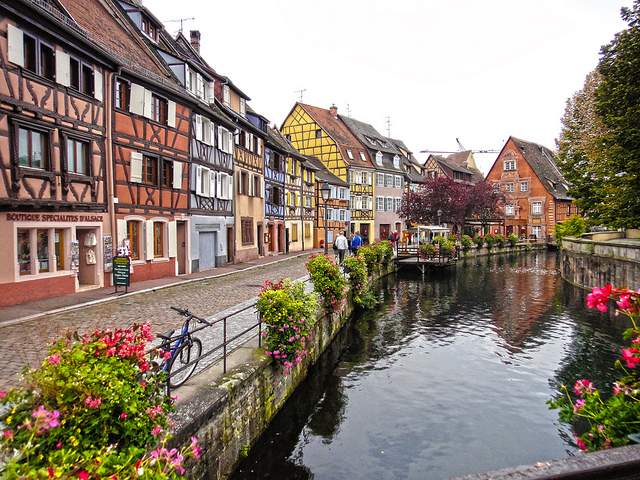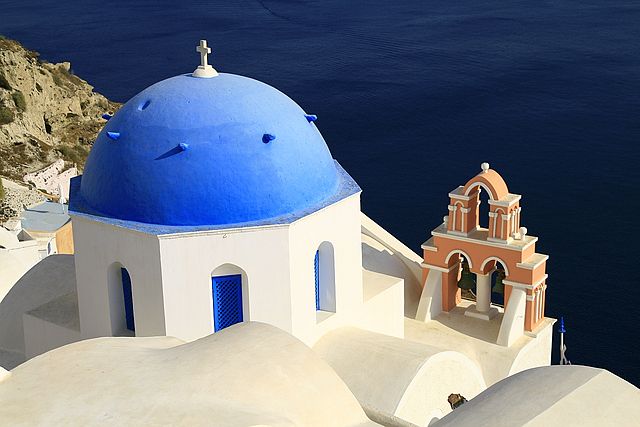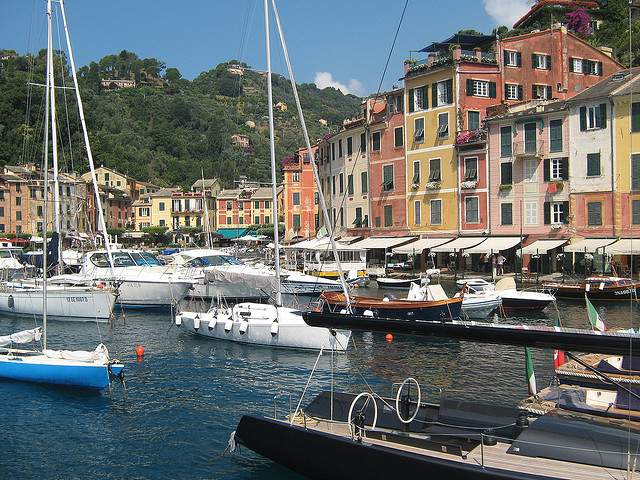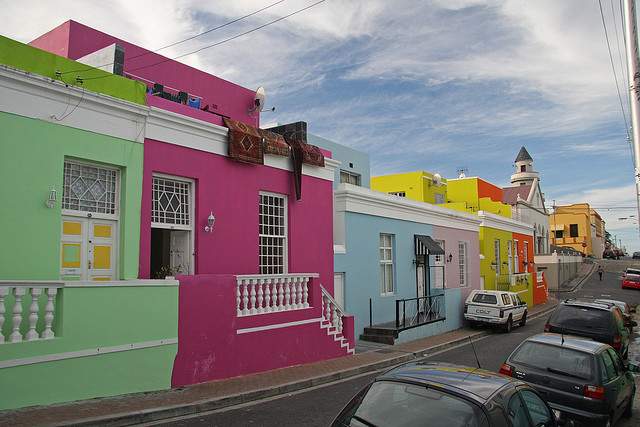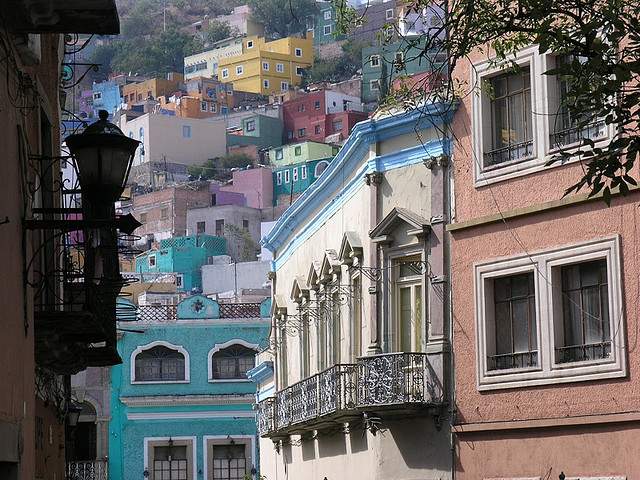The architecture of a small town is heavily determined by its history and culture. The inhabitants, together with their customs and beliefs, can have a strong impact on the planning, designing and construction of buildings.
Color is an equally important part of that history and culture, and is an element that can animate the feel of a small town. Influenced by various events in time, the chromatic features of a place usually come wrapped in an interesting story, with the power to attract visitors worldwide. And when architecture, the most representative aesthetic feature of a place feasts on color, the stage is set for a remarkable traveling experience.
[social]
So, fellow travelers, here are eight of world’s most colorful small towns, each with its own special atmosphere:
Chefchaouen, Morocco: The Blue City
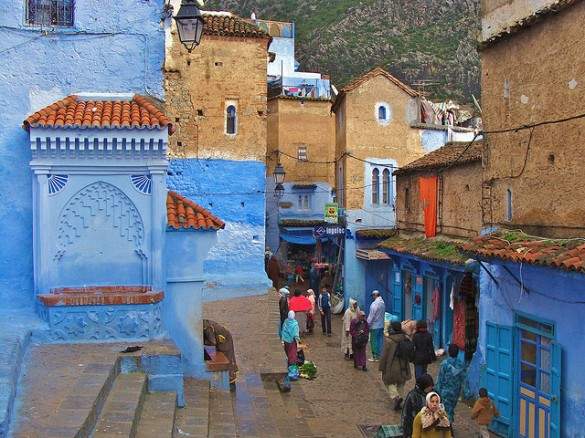
Known for its hypnotizing buildings in shades of blue, Chefchaouen is a small town located in northwest Morocco, a bus ride away from Tetouan or Casablanca. Its name derives from the shape of the odd, yet charming mountain tops overlooking the town, which resemble two horns (chaoua) of a goat.
The unique architecture of medina (the old town) is Chefchaouen’s most striking feature. With red-tiled roofs, narrow lanes, and buildings painted with a translucent blue pigment, this is a true photographer’s haven. Local historians explain that the blue color was brought here by Jews who sought refuge in this mountainous city after the Spanish Reconquista. In Jewish tradition, blue is a symbol of holiness and protection from evil.
With a rich history dating back to medieval times, this colorful place is said to be the embodiment of all Moroccan-related rumors one comes across before traveling here. It takes a little knowledge regarding safety measures before visiting Chefchaouen- the center of the marijuana plantations region in North Morocco- but once you master saying “no” calmly and repeatedly to various people insisting on selling you drugs, you can enjoy a relaxing holiday here, with plenty of original things to do, see and learn.
>> Book a flight to Morocco or find a Morocco adventure tour
Colmar, France: Pink, yellow and timber framing
Reflecting eight centuries of Germanic and French architecture, the beautiful city of Colmar is the capital of central Alsace and has a privileged location between the Vosges and the Rhine, near Germany and Switzerland. With its “country town” feel, Colmar is a perfect place for travelers looking to unwind and enjoy a casual ambiance, just a train ride away from Paris.
This absorbing small town is known worldwide as the home of sculptor Frédéric Bartholdi, designer of the Statue of Liberty. Numerous monuments, religious landmarks and museums contribute to Colmar’s rich and vibrant cultural life.
The architecture of the area is a result of successive French and German occupations and its unique color palette is defined by pink and yellow Vosges sandstone and charming timber framing on buildings which date back to German Gothic, German Renaissance, German Baroque and French Classicism styles. Another important, but less-talked about element of the local architecture is the work of caricaturist Jean Jacques Waltz, who skillfully sculpted various shop signs in forged iron. All these details make walking through Colmar a relaxing and rewarding experience, especially during the winter holidays, when the town seems sprung out of a fairytale.
>> Find a hostel in Colmar
Oia, Santorini: White chapels, blue domes
Situated atop of a dramatic cliff and displaying a diverse colorful architecture, Oia (also known as Ia) is the most popular small town on the island of Santorini, Grece.
White chapels with blue domes, fishing docks, the Caldera, beautiful sunsets, narrow streets and donkeys make this place highly appealing. Many artists come here to create, which probably explains the existence of various art galleries, in a community with no more than 1000 inhabitants.
The architecture of Oia is the result of the Venetian rule over the island, blending relatively large medieval houses (entitled “kapetanea”, as they belonged to the captains) with modest cave homes. During high season, the narrow streets of Oia are filled with tourist shops, taverns and cafés. Nevertheless, these contemporary commercial units do not disrupt the feel of the local architecture, which is protected by law, but rather blend in the landscape.
Even though the predominant hue of the town is white aubergine, Oia has buildings painted in a variety of colors, from red and brown, to light yellow and pink. Traditional blue gates and domes contrast the recently built private residences and hotels. These modern additions complete the colorful landscapes of the town, with their infinity pools and diverse lighting schemes.
>> Find flights to Santorini or search Santorini hostels
Portofino, Italy: Pastel colors of Italy
Portofino is a small fishing town and a popular yachting destination located in the province of Genoa, on the Italian Rivera. With a rich history, dating back to antiquity, it is no wonder that the architecture of the town is so diverse and colorful.
Said to be founded by the Romans and first named Port of the Dolphin, Portofino has a genuine Latin and Italian feel. This is why walking through the town and observing its lifestyle can be truly captivating. Reflected in the Ligurian Sea, Portofino is not just a place to observe, but also to photograph.
The architecture of Portofino is defined by a balanced color palette made up of light orange, red and yellow. Sophisticated details such as cupolas, gabled roofs, cobblestone pathways, pocket gardens and street lamps add a rustic charm to the small town. All these elements pay tribute to Italian architecture and meticulously craft authentic local landscapes.
The harbor is considered the core of Portofino and features pastel houses which make a lovely contrast with the anchored boats and yachts. Every night at sunset, this part of town gets a new fascinating look, as the colors change with the shifting of the sun’s rays.
>> Find a Portofino hostel
Bo-Kaap, South Africa: Multicultural hues
Bo-Kaap is a multicultural area, situated in Cape Town, South Africa, on the slopes of Signal Hill. Its vibrant culture is a result of an interesting blend between East and West, of slaves from Indonesia, Java, Celebes, Bali and other parts of Asia, brought here by the Dutch centuries ago. Attracted by the privileged location of Bo-Kaap and its architecture, many European foreigners bought land in the area in the last fifteen years, contributing to its multinational character.
The buildings in Bo-Kaap are characterized by either Bristish of Dutch influences. Stroll around the picturesque cobblestone streets and you will observe an intriguing mix of vivid colors. The contrasts are striking and even though two consecutive hues do not seem to match very well, the whole composition exudes a friendly vibe. White cornices act as the unifying elements for the small dwellings. One could say that the mixture of colors is a compensation for the flat facades,which lack architectural rhythm elements.The single floor homes relate to human scale and the tiny porches with painted iron railings enhance the feeling of hospitality, making Bo-Kaap a cheerful traveling destination.
>> Learn more about visiting the Bo-Kaap
Bryggen, Norway: Medieval colors of commerce
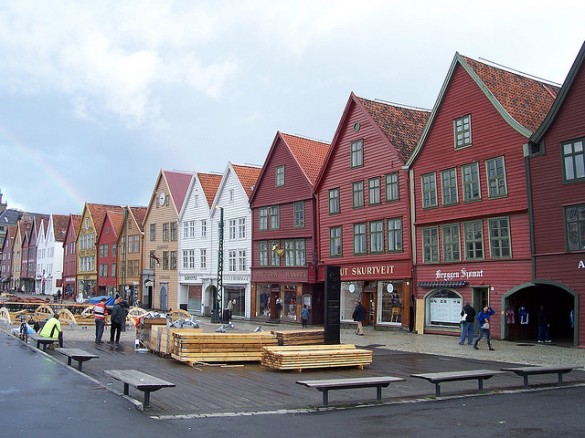
An important historical trading center, Bryggen is the oldest and most captivating area of the Norwegian city of Bergen.
This small commercial town dates back to 1070 and was part of the Hanseatic League’s trading empire from the 14th to the mid 16th century. Each of the buildings in the area comes with an interesting past, ; most were once wooden warehouses which stored goods like fish or grains.
Even though the district suffered some damage (mainly caused by fires) over the years, the reconstructions were always executed using traditional practices and the same materials as the original buildings.
Walking through the narrow streets of Bryggen and observing the details of its classic architecture is a notable experience in itself. The traditional wooden dwellings were built in long rows and the restaurants, gift shops, hotels, pubs and museums which currently animate the area can easily be recognized by the color of their corresponding building.
>> Find hostels in Bergen
Guanajauto, Mexico: A vibrant architectural and chromatic mix
Guanajuato is a colorful mountain colonial town, founded by the Spaniards in the early 16th century and located in central Mexico. The rich history of the city is reflected in both its traditional buildings and subterranean streets. A system of underground tunnels connects important tourist landmarks, making Guanajuato extremely pedestrian-friendly.
The surface is literally a labyrinth of narrow and winding streets, best to be discovered on foot. Most of them can not be accessed by car, especially the ones made up of natural stairs which climb the mountain. The buildings are also constructed on slopes, with each one painted in a different color. The historic center of Guanajuato accommodates private residences, colonial area mansions and historical churches built with pink or green sandstone. A general view of the town will reveal a vibrant mix of green, blue, brown, orange, yellow and so on. Even though a variety of architecture styles can be found in this part of central Mexico, the predominant ones are Baroque and Neoclassical.
>> Read more about Guanajauto
Longyearbyen, Norway: Defying the Arctic cold

Known as the world’s most northerly town, Longyearbyen is also the largest settlement in Norway’s Svalbard archipelago. The polar climate of the small town – long, harsh winters and cold summers – is not always human friendly. This is probably why each building in this area has a vivid, cheerful exterior.
Said to be discovered by Icelanders, centuries ago, Longyearbyen prospered at the beginning of the 20th century, when the mining potential of the area was discovered. As a result, people from many nations moved here and currently live in Longyearbyen. Now home to about 3000 inhabitants, Longyearbyen has a cinema, tourist stores, a nightclub and a big sports hall. An airport built back in 1975 connects the small town with Oslo (access is also possible by boat during the summer).
>> Find adventure trips to Norway
Learn more about art and architecture around the world:
